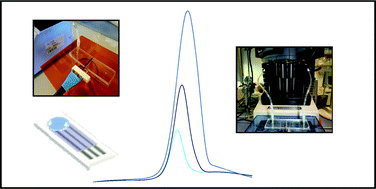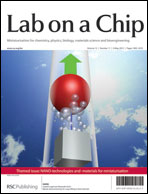On-chip electrochemical detection of CdS quantum dots using normal and multiple recycling flow through modes†‡
Abstract
A flexible hybrid polydimethylsiloxane (PDMS)–polycarbonate (PC) microfluidic chip with integrated screen printed electrodes (

- This article is part of the themed collection: NANO-technologies & -materials for miniaturisation

 Please wait while we load your content...
Please wait while we load your content...